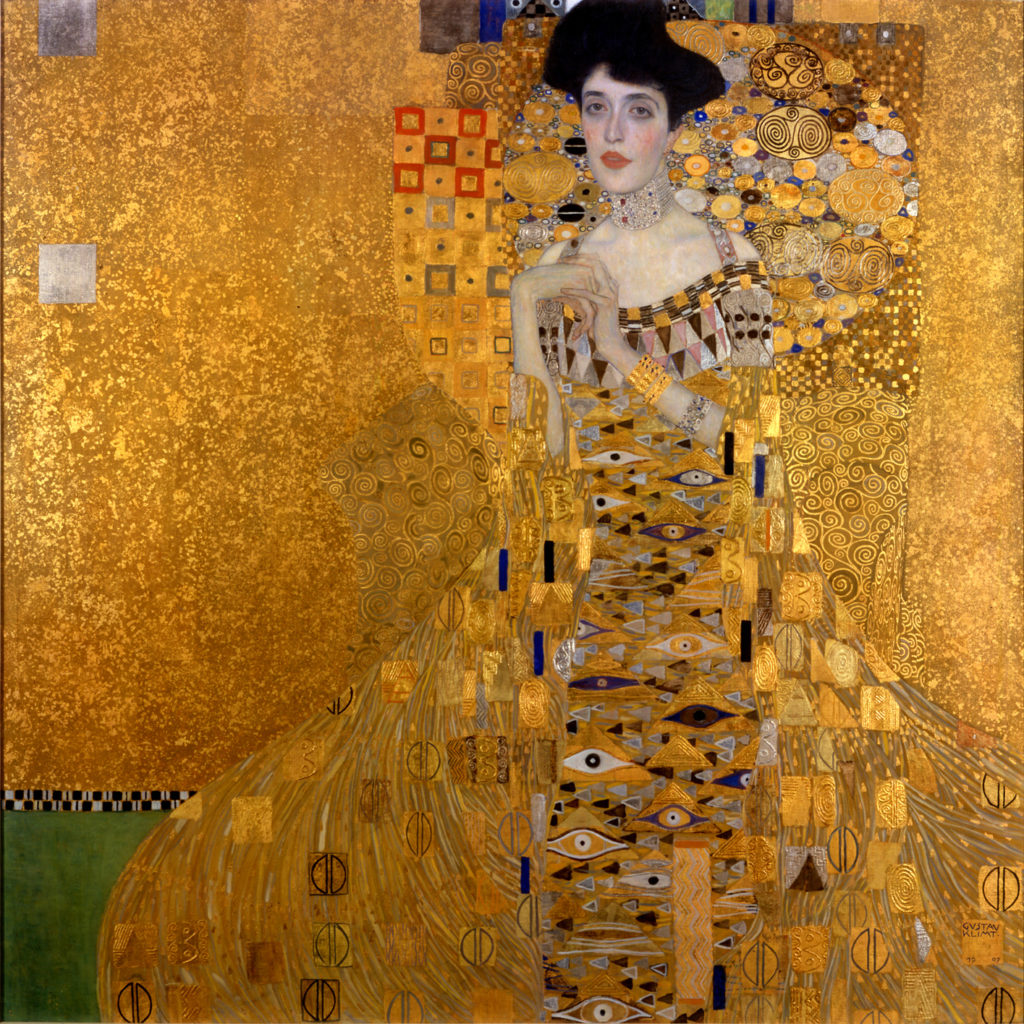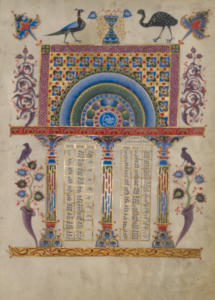Discussions about provenance often arise in the context of thefts committed during WWII, as well as mysterious losses of artworks and cultural objects during that time. This is not surprising, due to the fact that the Nazi Party looted a fifth of all art in Europe. Works not stolen were sometimes hidden in order to protect them from plunder. It has taken decades to restitute stolen objects, and there are many works still missing from rightful owners.
One of the first cases involving Nazi loot was Menzel v. List, 298 N.Y.S. 2d 979 (1969). Erna Menzel sued the Lists, good faith purchasers, for the return of a Chagall painting, Le Paysan à L’échelle, stolen from her vacated apartment in Brussels. The Menzels had fled their home in 1941 when the Nazis entered Belgium and plundered cultural property across the country. Amongst other allegations, the Lists argued that the Menzels had abandoned their property and asserted that they bought the work in good faith. The court ruled that the painting was not abandoned, and thus, the Nazi Party never gained title to the work. Ultimately though, the court had to make a determination between “two innocent parties,” and decided in favor of the original owner, Menzel. Despite the work’s return to Menzel, not all hope was lost for the good faith purchasers. The Lists recovered damages from the gallery that sold the work to them, the Perls Gallery. (The well-known gallery acquired the work in Paris in 1955, but its whereabouts between 1941 and 1955 is still unknown, demonstrating the importance of conducting thorough due diligence prior to an acquisition.)
During the decades following WWII, a number of disputes concerning Nazi loot came before US and international courts and committees, but a major resurgence of cases began decades later. In the 1990s, the international community began reexamining Nazi plunder in detail. The reunification of Germany and influx of information from the states formerly part of the Soviet Union resulted in the release of records about loot, and it sparked an increased global awareness about issues related to war-era thefts. During the same decade, non-binding legal instruments, like the Washington Principles on Nazi-Confiscated Art were drafted.

One of the most famous disputes over Nazi loot was Republic of Austria v. Altmann, 541 U.S. 677 (2004). The issue before the Supreme Court dealt with a very narrow exception for immunity under the Foreign Sovereign Immunities Act, but the underlying facts of the case involve a number of paintings that share a similar sad history.
The litigation was filed by Maria Altmann, the niece of prominent Jewish manufacturers and art collectors, Ferdinand and Adele Bloch-Bauer. Their art collection included several works by Gustav Klimt, a prolific member of the Vienna Secession and a dear friend of the family. Adele died in 1925, and her will directed her surviving husband to donate six Klimt works to the Austrian State Gallery upon his death. During the probate of Adele’s will, it was determined that the works belonged to Ferdinand. The year after his wife’s passing, Ferdinand stated his intention to gift the works in accordance with his wife’s wishes, but he never did. In 1938, when the Nazis annexed Austria, Ferdinand fled Vienna, and the Nazis seized all of his property, including his art collection.
Following the war, Ferdinand attempted to recover his artwork, but he passed away in Switzerland in 1945. He left behind a short will in which none of his artwork was bequeathed to the Austrian gallery. On May 15, 1946 Austria enacted the “Annulment Law” (Federal Law Gazette 106/1946), a law that declared “null and void” all transactions and other legal actions carried out by the German Reich in the course of the financial or political penetration of Austria that resulted in the confiscation of property without fair compensation.
In 1947, Maria Altmann was named as an heir to Ferdinand’s estate. Along with the other heirs, she sought to reclaim Ferdinand’s property. The attorney for the heirs attempted to recover three Klimt paintings from the Austrian State Gallery, but the gallery claimed that the works were bequeathed to it by Adele Bloch-Bauer in 1926 and that Ferdinand only had permission to possess the works during his lifetime. The Austrian lawyer mistakenly believed that Ferdinand Bloch-Bauer’s intention to donate the paintings was binding, and thus, the works ended up being erroneously donated to the museum.
In 1998, after the seizure of two works on loan from Austria to the Museum of Modern Art in New York (see United States v. Portrait of Wally, 663 F. Supp. 2d 232 (S.D.N.Y. 2009), the Austrian National Gallery opened its archives to researchers. In 1999, journalist Hubertus Czernin contacted Maria Altmann with information proving that neither Ferdinand nor Adele had donated the works to the Austrian State Gallery. In the meantime, Austria passed a restitution law intended to return works donated under duress. A committee was formed and recommended the return of hundreds of works. However, it voted against returning the Klimt paintings. Altmann protested and requested arbitration, which was rejected. She then commenced litigation.
The Austrian government filed a motion to dismiss, asserting lack of subject matter jurisdiction under the Foreign Sovereign Immunities Act. The district court denied the motion, and the Court of Appeals and US Supreme Court affirmed the district court’s decision. The Supreme Court ruled that Altmann had the right to proceed with the litigation in the United States. Ultimately, the parties agreed to a binding arbitration in Austria. In 2006, the panel ruled in Altmann’s favor for 5 of the 6 works. Four of the works were sold at auction that year, and the fifth was purchased by Ronald Lauder for the Neue Galerie in NY. Lauder purchased the work for $135 million, then the highest price paid for a painting.
Provenance is central to nearly all matters related to stolen art. For instance, a detailed provenance of an illuminated manuscript looted during conflict was essential in the eventual settlement of a $105-million-dollar lawsuit, Western Prelacy of the American Apostolic Church of America v. J. Paul Getty Museum, No. BC438824 (Cal. Super. Ct. Oct. 19, 2012), against the J. Paul Getty Museum in Los Angeles, California. The Western Prelacy of the Armenian Apostolic Church of America filed a suit in 2010 alleging that the museum purchased eight illustrated pages that were once part of a 750-year-old Bible. The manuscripts were known collectively as the Zeyt’un Gospels Canon Tables, but they had been stolen during the Armenian Genocide sometime between 1915-1923.
The Canon Tables, part of the Zeyt’un Gospels, were created in 1256 by T’oros Roslin, a revered High Middle Ages illuminator. It is one of only seven known preserved manuscripts bearing Roslin’s signature, and it is the earliest of his signed works. Through the centuries, the Zeyt’un Gospels were regarded as a cultural treasure, believed to wield powers that would shield and guard everyone associated with them. During the Armenian Genocide, the church hierarchy paraded the Zeytun Gospels through every street in Zeytun to create a divine firewall of protection around the city. The remaining part of the Zet’un Gospels were in Yerevan, Armenia, while the Canon Tables surreptitiously journeyed to the United States.

The prelacy demanded return of the manuscripts from the Getty Museum, but they needed to establish their ownership rights first. Provenance research revealed that in the late nineteenth century, the Zeyt’un Gospels were in the joint possession of the Sourenian Family and the Church of the Holy Mother of God. The manuscript made its way to Marash (modern day Kahramanmaraş) in 1915 where Turkish authorities deported Prince Asadur Agha Sourenian, then in possession of the manuscript. In 1916, Dr. H. Der Ghazarian, a family friend of the Sourenians, borrowed the manuscript when the family was exiled to Syria. Four years later, in 1920, the doctor and his sister fled Marash, but they were forced to leave the manuscript behind. It was found by a Turk who took the rare item to Melkon Atamian for the purpose of selling it. Before refusing to handle the sale and returning the manuscript, Atamian cut away and removed the eight Canon Table folios illuminated by Roslin. Between the late 1960s and early 1980s, the manuscript (without the Canon Tables) changed hands several times, until it came to rest at the Mesrob Mashtots Matenadaran in Yerevan, Armenia, where it remains today. Contemporaneously, the illuminated Canon Tables removed from the manuscript were in the United States. Gil Atamian, the heir of Melkon Atamian, claimed to have inherited them upon his uncle’s death in 1980. He anonymously exhibited the works in 1994 at the Walters Gallery and the Pierpont Morgan Library in a show entitled “Treasures from Heaven: Armenian Illuminated Manuscripts.” That same year, the Getty Museum purchased the Canon Tables from Atamian.
Due to the Church’s ability to trace the passage of the pages, it demanded restitution and confirmed that the missing pages were the same as those in possession of the Getty Museum. As a result, a settlement was reached in September 2015, with the agreement acknowledged the Church’s rightful ownership of the Canon Tables. The Church then donated the illuminated pages to the Getty Museum in order to guarantee their preservation and exhibition. (For more information about the Zeyt’un Gospels, Guggenheim Fellowship winner Heghnar Zeitlian Watenpaugh’s The Missing Pages was released just last year.)
Although much of the focus of looting during WWII focuses on the wide-scale looting committed by the Nazis, Germany also suffered extensive losses of its own cultural heritage items. For example, it is estimated that the Soviet armed forces stole and transported more than 2.5 million objects from Germany to the USSR, and these items were held in secret until the collapse of the Soviet Union in 1991. The items became known as “trophy art” within Russia. American servicemen also stole valuable property throughout Europe during WWII.
One well-known restitution was for property stolen from the Church of St. Servatii in Quedlinburg, Germany (see United States v. Meador, No. 4:96-cr-00001 (E.D. Tex. Oct. 22, 1996), aff’d, 138 F.3d 986 (5th Cir. 1998)). An American Army Officer, Joe T. Meador, stole a number of rare and valuable treasures and shipped them home to Texas. The stash comprised of 12 medieval religious treasures, including a 16th century manuscript with a jewel-encrusted cover.

Apart from their physical beauty, the Quedlinburg Treasures have great historical importance to Germany. Quedlinburg has a rich history dating back to at least the 10th century when it was ruled by Heinrich I, a 10th-century Saxon ruler who united an early configuration of German-speaking states (Heinrich is generally acknowledged as the founder of the medieval German state). The town’s treasure, containing extraordinary examples of medieval high craftsmanship, was located in the Schatzkammer (treasure chamber) of Quedlinburg’s cathedral for a thousand years. Saxon Queen Mathilde began building the town’s cathedral, St. Servatii, after the death of her husband Heinrich I in 926. The Quedlinburg Treasure was gathered at the church during the queen’s life. Subsequently, it became so large that it filled an entire treasure chamber. A millennium later, after Allied air-strikes on Germany began, the treasures were moved to a cave outside of the town for protection.
The treasures were hidden by church officials during the war, but the hoard was discovered by American forces, and then it went missing from Quedlinburg during the final weeks of WWII. The church reported the objects as missing, and the US Army even investigated the theft, but officials were unable to locate the missing pieces. Eventually, the United States abandoned its efforts when Quedlinburg became part of East Germany, and the objects were finally discovered decades later.
Unbeknownst to the church, Meador had found these items and absconded with them. An unofficial history of the 87th Armored Field Artillery Battalion states that Lieutenant Meador was assigned to Headquarters Battery, one of three units that organized teams to search the town for weapons, radio transmitters and other contraband. The unit’s history states that ”an intoxicated soldier,” discovered a “cave on the outskirts of the city” filled with ”valuables, art treasures, precious gems and records of all sorts.” Guarding this ”Nazi loot,” the history states, became an ”important” task for the 87th Battalion.
Meador evidently did not guard the property well, but rather took the opportunity to commit a crime. He mailed the precious objects to his family in Texas, with instructions that they not open the package. In references to the boxes he sent home, Meador wrote to his parents, “One is a box that contains a book, the cover of the book has a statue of Christ on it. By all means, if it gets home take extra good care of it. I have an idea that the cover is pure gold and the jewels on the cover are emeralds, jade and pearls. Don’t ask me where I got it! But it could possibly be very very [sic] valuable.” While still in Germany, he later lamented, “Now that the war is over it is harder to get things.” After his return from the war, Meador kept the treasures in a safe deposit box for decades.
Upon Meador’s death in 1980, the objects passed to his brother and sister, who then began selling the works. However, the lack of provenance led to problems. Reputable sellers would not deal with the objects, as experts realized that the works were the missing property from Quedlinburg. It consequently became impossible for Meador’s heirs to sell the property on the open market. Furthermore, due to the attempts to sell the works privately, the identities of Meador’s heirs were discovered, and several lawsuits were filed for the restitution of those objects. The parties reached an out-of-court settlement in 1992, and the heirs returned all the works in exchange for $2.75 million. Before the objects were returned to Germany, they were exhibited in the Dallas Museum of Art.
Another case involving property taken from Germany was the ownership dispute between a German museum and an American collector. (Kunstsammlungen Zu Weimar v. Elicofon, 678 F. 2d 1150 (2d Cir. 1982). The case was particularly complex because the works belonged to Kunstsammlungen zu Weimar (KZW), a museum located in East Germany, a country not recognized by the United States. After East Germany was finally recognized, New York federal courts ruled that KZW is the rightful owner of the works.

As during many conflicts, important cultural items are stored for safekeeping. During WWII, KZW kept a number of works in a castle. In 1945, thirteen works were stolen from the castle, including two portraits by Albrecht Dürer. After the war, an American serviceman returned home and sold the Dürer works to a NY art collector. Purportedly unaware of their stolen nature, Elicofon bought the works for $450 and displayed them in his home. He discovered the paintings’ attribution from a friend who had seen them in a book about artworks stolen from Germany during WWII. Afterwards, the Federal Republic of Germany, the Grand Duchess of Saxony-Weimar, and KZW demanded the return of the paintings. Elicofon refused. The lawsuit involved complex questions of international law due to the fact that the United States did not recognize East Germany at the time of the lawsuit’s filing in 1969. The case took over a decade to litigate, but it was finally resolved in 1981 when the Eastern District of New York granted a summary judgment motion in favor of KZW and compelled Elicofon to transfer ownership and possession of the works to the museum.
The two works, painted by Dürer in 1499, originally comprised a diptych. The portraits are of Hans Tucher and his wife Felicitas, members of a prominent Nuremberg family. The couple is shown in lavish clothing. The husband wears a ring on his thumb, in addition to another ring evidencing his marriage to Felicitas in 1482. His wife holds a carnation with a bud and a flower. Her waistcoat is held by a buckle engraved with his husband’s initials. The inscription in the top right of the portrait reads “FELITZ. HANS. TUCHERIN, 33 JOR. ALT. SALUS.” In 1824, the two portraits were included in the inventory of the museum in the Jägerhaus of Weimar. Until 1927, the works were part of the private art collection of the Grand Duke of Saxe-Weimar-Eisenach. In 1927, title to the Grand Duke’s art collection was transferred to the government of the Land of Thuringia. Until 1943, the Dürer paintings were on exhibition in the Staatliche Kunstsammlungen zu Weimar, the predecessor museum to KZW. But in 1943, officials of the museums feared that the museum might be bombed, so the works were moved to a storeroom in the castle at Schwarzburg. In June 1945, a United States Army regiment was stationed at Schwarzburg Castle. The disappearance of the paintings coincided with the departure of the American troops in July 1945. Subsequent to Elicofon’s return, a number of other looted artworks were returned to the KZW, including works by Jacopo de’ Barbari and Johann Tischbein.
Amineddoleh & Associates is currently working with a client to restitute an important cultural object that was removed from Germany during WWII, and the firm has previously assisted other parties with similar matters.